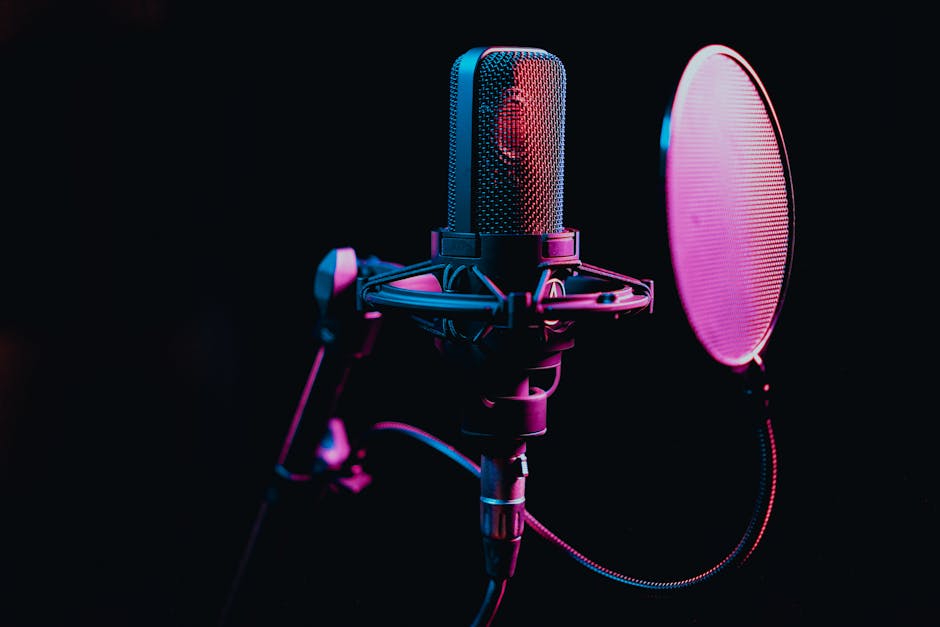The Best Practices for Microphone Placement for Optimal Sound.
The Best Practices for Microphone Placement for Optimal Sound
In the vast and intricate world of audio recording and live sound, few elements hold as much power over the final output as microphone placement. It’s a craft, a science, and an art form all rolled into one. Simply owning a high-quality microphone isn’t enough; where you position it can elevate a good recording to a professional masterpiece or condemn a pristine performance to muddy mediocrity. Optimal sound isn’t just about capturing sound; it’s about capturing the right sound, with clarity, depth, and character. This comprehensive guide delves into the core principles and advanced techniques that will empower you to consistently achieve superior audio by mastering the placement of your microphones.
Beyond “Point and Shoot”: Laying the Groundwork for Pristine Audio Capture
Before you even think about where to point your microphone, understanding the fundamental relationship between the mic, the sound source, and the environment is paramount. Microphone placement isn’t a one-size-fits-all solution; it’s a dynamic process influenced by several critical factors.
Decoding the Microphone’s Ear: Understanding Polar Patterns and Your Sound Source
Every microphone has a “listening” characteristic, known as its polar pattern, which dictates how sensitive it is to sounds coming from different directions. Knowing this is your first step to strategic placement. A cardioid microphone, for example, is most sensitive at the front and rejects sound from the rear, making it ideal for isolating a single source in a noisy environment or minimizing stage bleed. An omnidirectional mic, conversely, picks up sound equally from all directions, excellent for capturing the natural ambience of a room or a group of performers. A figure-8 pattern, sensitive to front and rear but rejecting sides, is perfect for capturing two sources facing each other or for specific stereo techniques.
Your sound source also informs the choice and placement. A delicate acoustic guitar requires a different approach than a booming bass drum. The size, dynamic range, and frequency content of the source will guide whether you need a close, intimate sound or a broader, more ambient capture. Understanding these foundational elements allows you to select the right tool for the job and begin to envision its optimal position.
The Critical Dance of Distance: Balancing Directness and Room Ambience
The distance between your microphone and the sound source is perhaps the most impactful variable in your placement strategy. It’s a delicate balance that significantly influences the direct sound, the room sound, and the presence of unwanted noise. Too close, and you risk an exaggerated low-end (the “proximity effect,” common with directional mics) or an unnaturally “dry” sound lacking natural resonance. Too far, and your direct signal can become weak, susceptible to background noise, and overwhelmed by room reflections, leading to a distant or hollow sound.
The goal is often to find the “sweet spot” where the direct sound is clear and prominent, but the natural acoustics of the room contribute positively without muddying the signal. For vocals, this might be 4-12 inches, providing intimacy without excessive proximity effect. For an acoustic guitar, it could be 6-18 inches, allowing the instrument’s body to resonate naturally. Experimentation within these ranges, combined with careful listening, is key to discovering the ideal distance for any given source.

Sculpting the Soundstage: Strategic Placement for Vocals and Instruments
With the foundational principles in mind, let’s explore specific placement strategies for common sound sources, focusing on how to extract their best sonic characteristics.
Capturing the Human Voice: Sweet Spots for Clarity and Warmth
The human voice is incredibly nuanced, and its optimal capture is often the most critical element in many productions. For lead vocals, a cardioid condenser microphone placed 4-8 inches from the singer, slightly off-axis (not directly into the capsule, but angled slightly up or down), can help mitigate plosives (harsh ‘P’ and ‘B’ sounds) while capturing a full, present sound. A pop filter is almost always essential to further control plosives and protect the microphone. For a warmer, more intimate sound, a dynamic microphone like an SM7B or SM58, often used closer (2-6 inches), can leverage the proximity effect to add body. Remember to consider the singer’s natural projection and dynamics; a powerful vocalist might benefit from a slightly greater distance to prevent overloading the mic preamp.
Instrument Close-Miking: Unveiling Tones with Precision
- Acoustic Guitar: A common starting point is to place a small-diaphragm condenser 6-12 inches from where the neck meets the body (around the 12th fret) for a balanced sound of strumming and body resonance. Another mic near the sound hole (but not directly over it, to avoid boominess) can add warmth. Experiment with angles to highlight finger noise, pick attack, or body resonance.
- Electric Guitar Amplifier: For a classic rock tone, a dynamic microphone (like an SM57) placed 1-2 inches from the speaker cone, halfway between the center and the edge, is a tried-and-true method. Moving closer to the center adds brightness; moving towards the edge adds warmth. Experiment with angling the mic slightly off-axis to smooth out harsh frequencies.
- Bass Guitar Amplifier: Often, a combination of a direct input (DI) box and a microphone on the amp is used. For the mic, a large-diaphragm dynamic mic placed 1-6 inches from the speaker cone can capture the amp’s unique character and low-end punch.
Amplifiers and Drums: Finding Power and Punch Through Positioning
Drums are a complex beast, often requiring multiple microphones to capture their full impact. A common approach involves close-miking individual drums and using overheads for cymbals and overall kit ambience. For the kick drum, a large-diaphragm dynamic mic placed inside the shell, pointing at the beater, provides attack and punch. For the snare, an SM57 positioned 1-2 inches above the rim, angled towards the center, captures crispness. Overhead microphones (often condensers) are typically placed 3-5 feet above the kit, equidistant from the snare and kick, to capture the cymbal wash and the overall stereo image of the kit. The “3:1 rule” is a useful guideline here: the distance between microphones should be at least three times the distance from each microphone to its sound source to minimize phase issues.
Taming the Environment: Adapting Placement for Challenging Acoustic Spaces
Not everyone has access to a perfectly treated studio. Understanding how to mitigate bad acoustics or leverage good ones through clever placement is a vital skill.
Minimizing Unwanted Reflections: Strategies for Untreated Rooms
Reflections off hard surfaces (walls, ceilings, floors) can cause comb filtering, muddiness, and an overall unprofessional sound. In an untreated room, strategic microphone placement becomes your primary defense.
- Get Closer: The closer your microphone is to the sound source, the higher the ratio of direct sound to reflected sound. This reduces the impact of room reflections.
- Use Directional Mics: Microphones with cardioid or supercardioid patterns can reject sound from the sides and rear, minimizing reflections from those directions. Point the null (the area of least sensitivity) of the microphone towards the most reflective surfaces.
- Position Away from Corners: Corners often exaggerate low frequencies and create standing waves. Avoid placing sources or microphones directly in corners.




Post Comment